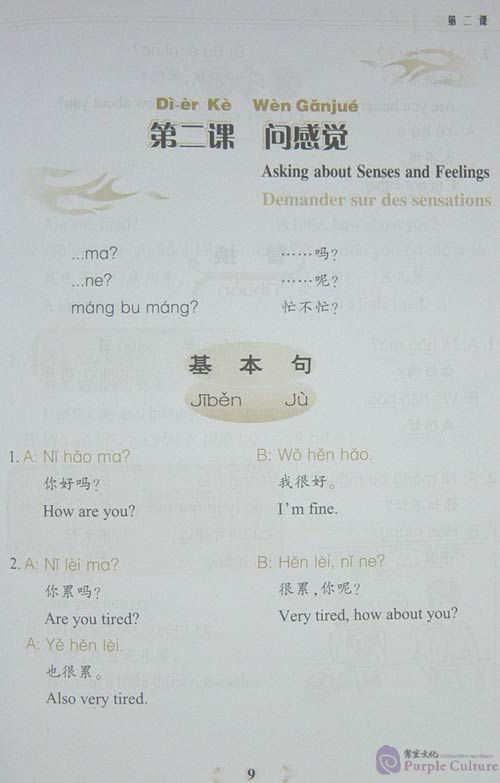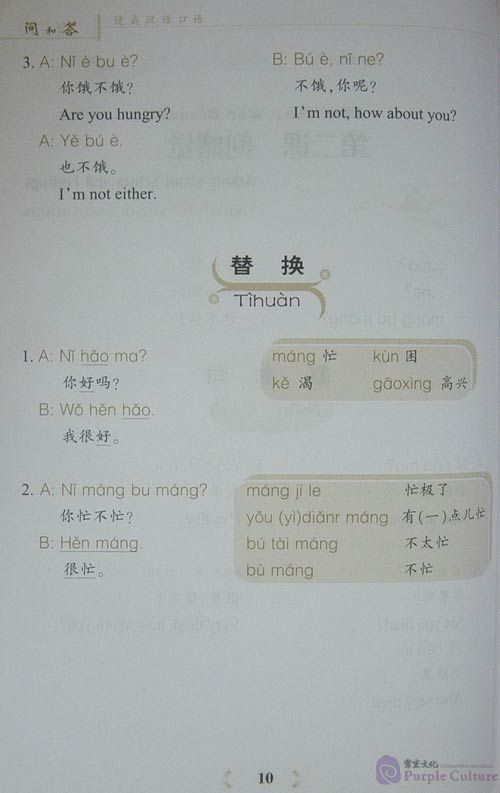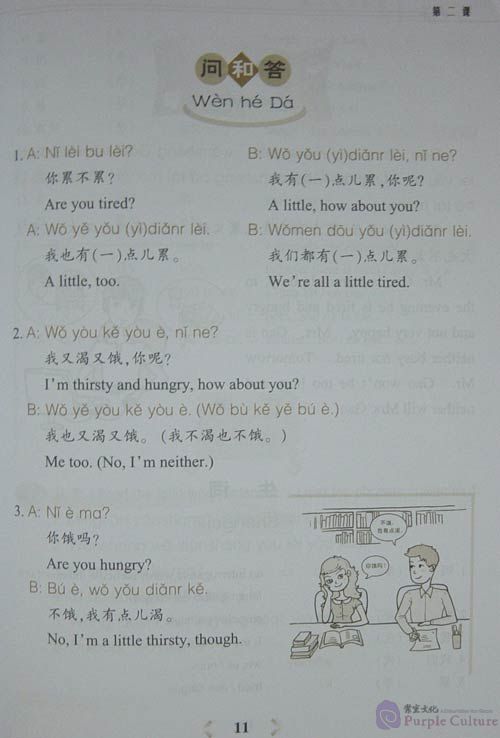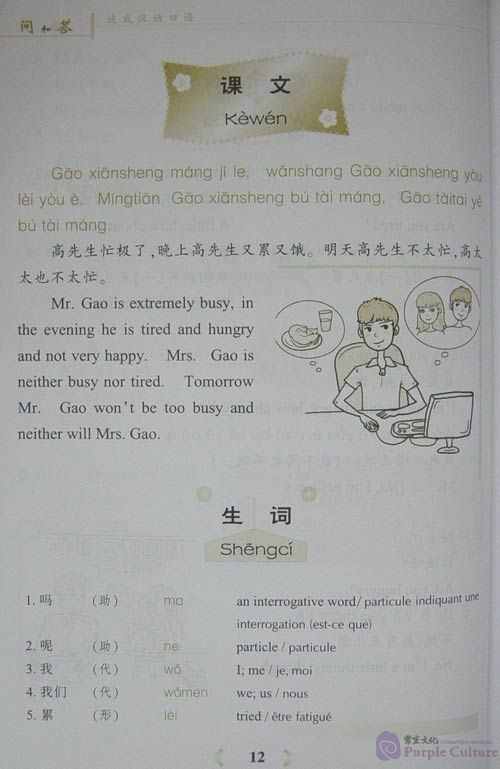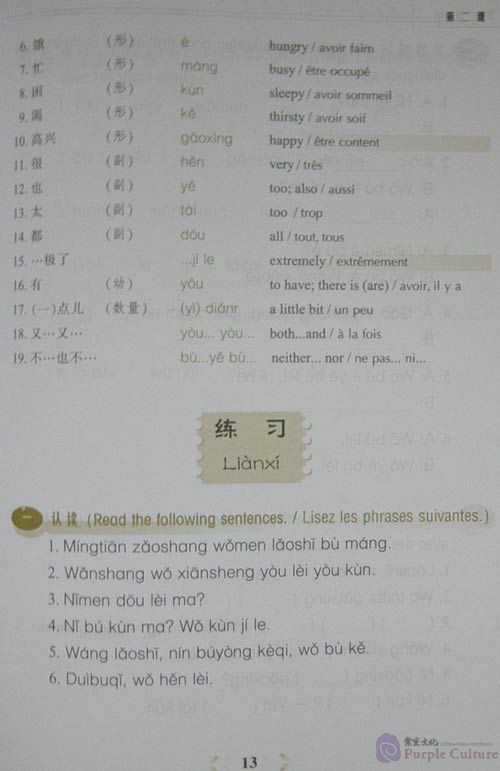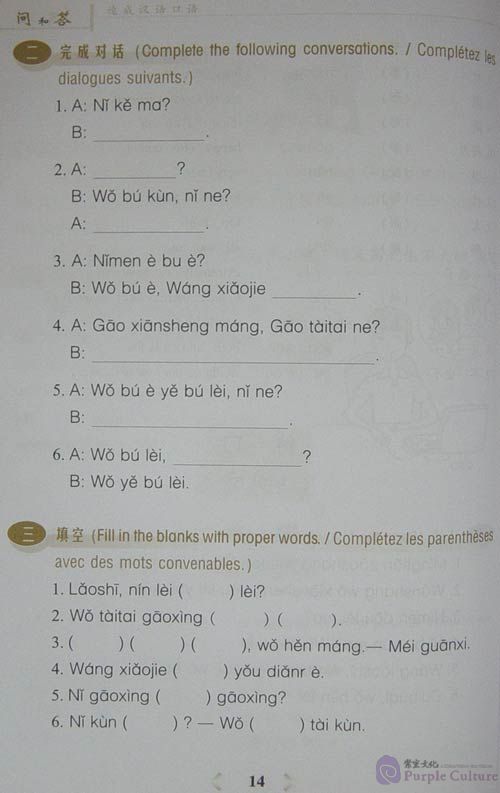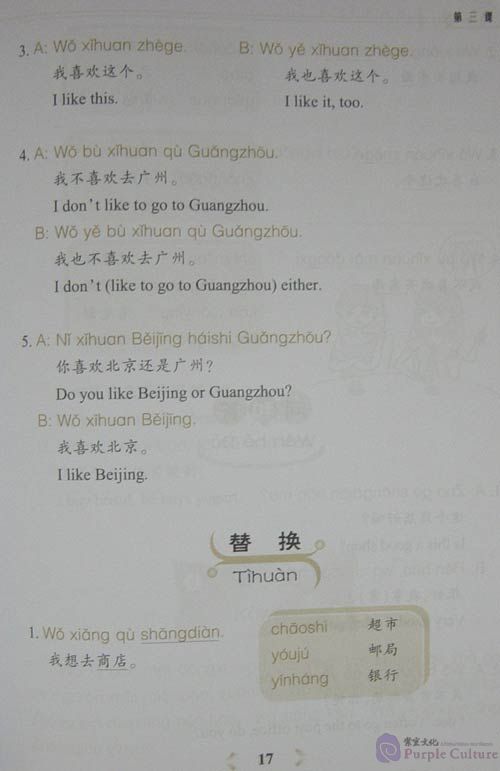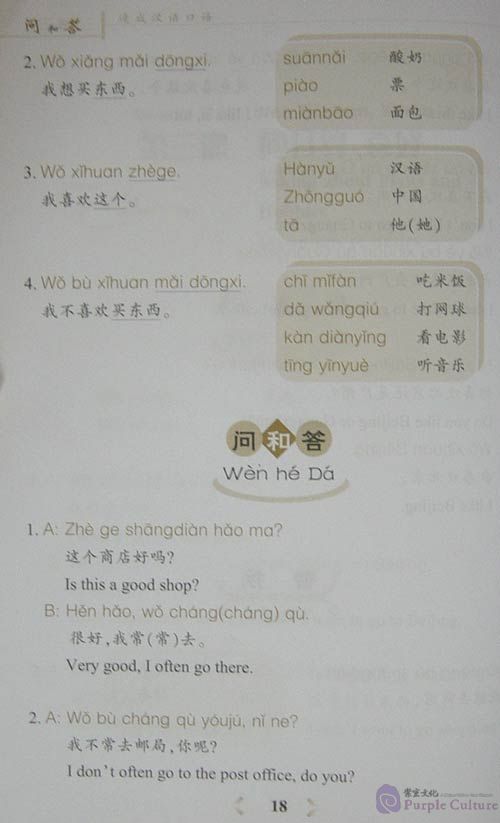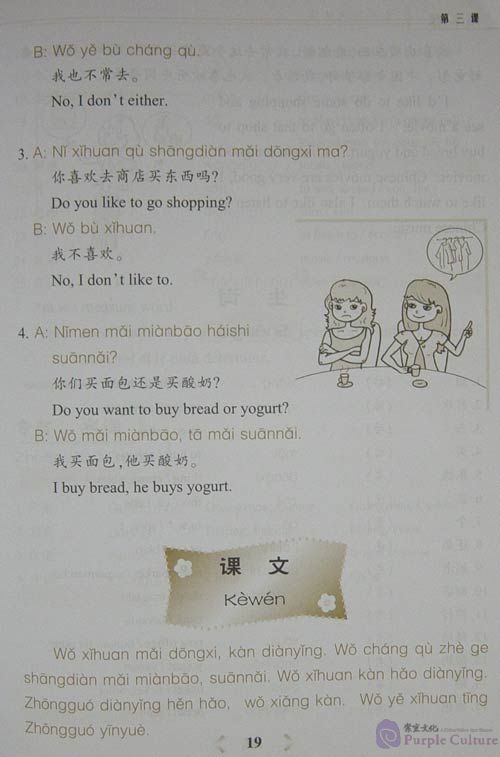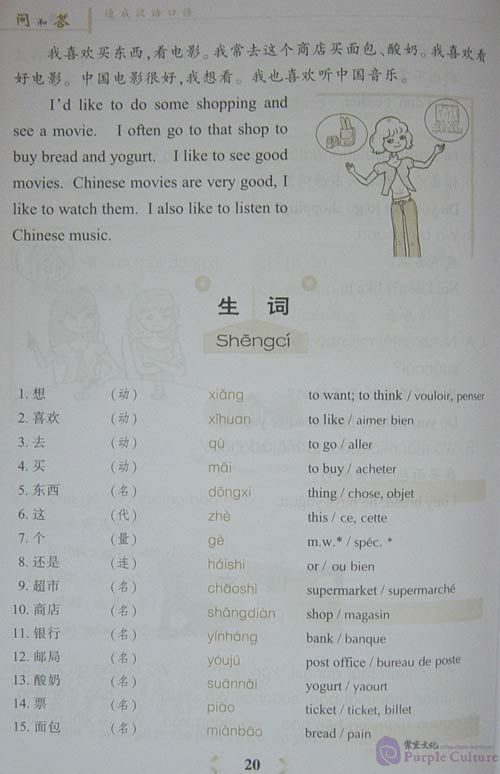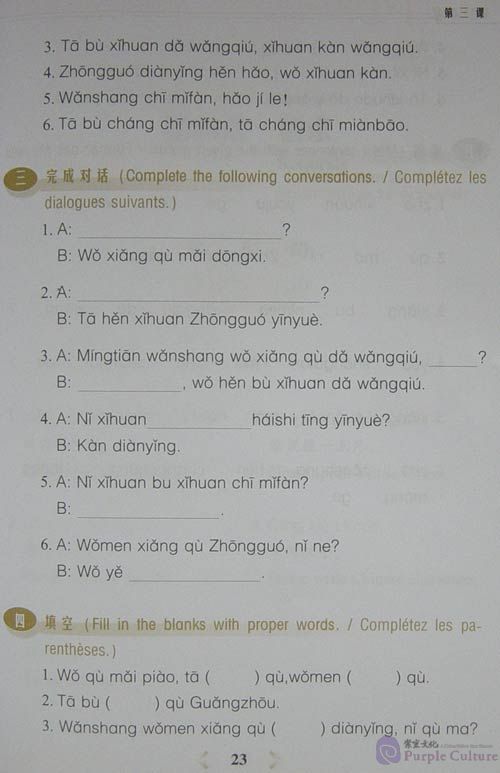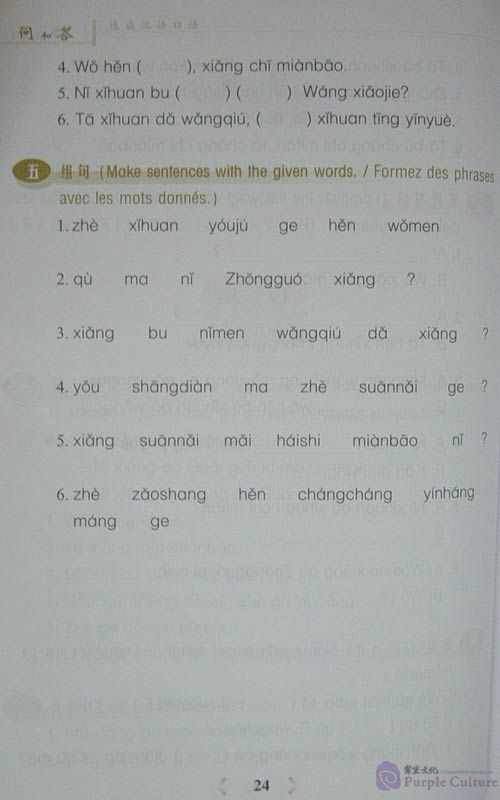FOREWORD
For the sake of helping foreigners learn “practical” Chinese in the shortest time, we have investigated what they are most eager to say in Chinese. Subjects were asked to answer questions in their native language. Statistical data show that their answers are mostly related to interrogation. For instance, “what’s your name?” “Where is the shop?”, “How much is this?”, etc.. Hence, the idea occurred to us to compile an “extremely” elementary oral Chinese textbook with interrogative sentences as the core.
As an oral Chinese textbook, its language should be practical and easy to learn. In line with this principle, we have divided the book into sixteen lessons. Each of the eleven interrogative words constitutes one lesson, and the other five lessons are respectively entitled “Polite Words”, “Asking Senses an Feelings”, “Asking Needs and Hobbies”, “Requests”, “Farewells”. Each lesson is made up of “Basic Sentences”, “Substitutions”, “Questions and Answers”, “Texts”, and “Exercises”.
Students must master the “Basic Sentences”, because they are the core of each lesson. The purpose of “Substitutions” is to enlarge vocabulary and to practise the drills of basic sentences. “Questions and Answers” are the focal point, focusing on interrogation, helping students parctise asking questions. The “Texts” are composed of words and expressions which have appeared in previous lessons, as well as some new ones. Students then raise questions with the instructor over the content of the text. The first four sections of each lesson are presented in both pinyin (Spelling) and Hanzi (Characters). The “Exercises” focus on interrogation, and are written solely in Pinyin. For the students’ convenience, we include the Chinese Alphabet at the beginning of the book and a general glossary at the end. All the new words are translated into English and French.
After its compilation, this book was tried out by selected students. It was well received, for it met the students’ needs: being original in its choice of subjects and materials, focusing on learning how to ask question. While using this textbook, the students were enthusiastic about communicating. So their speaking skill improved rapidly.
The book is made to allow beginners four to five weeks of study.
-------------------------------------
AVANT-PROPOS
Afin d’aider les étrangers à maîtriser le plus vite possible le chinois pratique, nous avons fait une enquête. Nous leur avons demandé d’ écrire dans leur propre langue ce qu’ils désiraient pouvoir dire dès leur arrivée en Chine. Les relevés statistiques ont montré que ce sont les phrases interrogatives, comme: “Où est le magasin?” “Combien ça coûte?” “Comment vous appelez-vous?” “qui les intéressent le plus. Elles nous ont guidés pour concevoir une méthode originale d’initiation au chinois parlé, fondée sur les phrases interrogatives.
Destiné à l’apprentissage du chinois oral, ce manuel se devait d’ être pratique et d’un abord facile. Selon ces principes, il comprend seize leçons: onze pour les pronoms interrogatifs, et cinq leçons introduisants: les formulas de politesse, expressions des sensations et désires, faire appel aux autres. Chaque leçon est découpée en cinq parties: les phrases élémentaires, les substitutions, les questions et réponses, le texte et les exercices.
Les phrases élémentaires constituent le coeur de la leçon. Les étudiants doivent les apprendre par coeur. Les substitutions peuvent enrichir leur vocabulaire et les aider à pratiquer les phrases élémentaires. Les questions et réponses, partie essentielle de chaque leçon, mettent en relief les phrases interrogatives. Le texte est composé de mots déjà appris et de mots nouveaux dont les étudiants peuvent tirer un “vivier” de questions qui renforcera l’enseignement des phrases interrogatives. Ces quatre premières parties sont rédigées à la fois en pinyin et en caractères chinois, les étudiants sont libres de choisir. Les exercices portant sur les phrases interrogatives sont rédigés en pinyin. Un tableau de pinyin au début du livre et un index de vocabulaire en fin de manul facilitent l’usage de ce livre. Les mots nouveaux et l’index de vocabulaire sont traduits en anglais et en français.
Cette méthode déjà mise en apoplication a remporté un francsuccés. Son style nouveau, ses objectifs clairs, l’accent mis sur les phrases interrogatives ont permis aux étudiants d’obtenir des resultants immédiats. Elle révolutionne l’apprentissage du chinois oral.
Cette méthode est destinée aux débutants étrangers, qui vont apprendre le chinois pour une période de cinq à six semaines.
